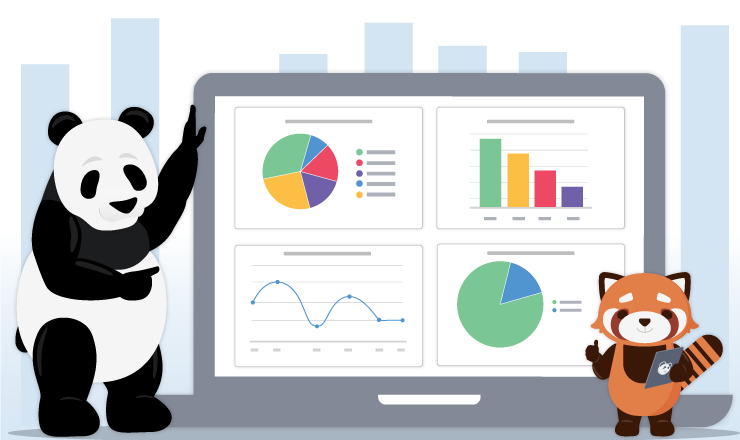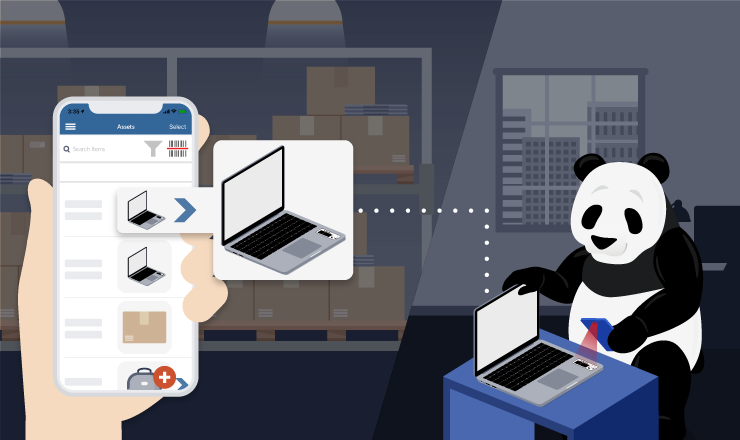How to Find the Best Asset Management Tools

If you’re a business of any size, you have assets. These assets may include physical items, such as machinery and tools, or they may be digital assets, such as software or code. If you’re very early in your business, your assets may be as simple as the creative ideas you bring to your future plans.
But for anything more tangible than an idea, keeping track of assets is a vital and often undervalued part of running a successful, efficient business. After all, inventory is tracked almost obsessively— no serious business ever fails to determine where their goods for sale are located. But asset tracking isn’t always straightforward, and because every business is unique, their asset management needs can often seem overwhelming.
That’s where asset management software comes in, helping deliver powerful and streamlined solutions to help companies keep track of all their most important assets, from headsets to buildings.
What is Asset Management Software?
Asset management software is designed to help companies and organizations track their assets, whether they’re physical or exist only in the digital space— including financial assets. In the case of physical assets, asset management software uses a range of technologies, often barcodes or QR codes, to track the movement of these items from one location to the next. Tracking digital assets requires a different version of the same thing, without the physical scanning of barcodes or other forms of identification.
Digging a bit deeper, asset management software does more than track where an item is— it also tracks who is currently responsible for that item, as well as a range of other data points that can be useful for the businesses that use these platforms. These data points could include the maintenance status of a physical asset, or the last time it was inspected.
The best asset management tools go beyond asset tracking to provide a fully configurable platform, catering to everyone from the small construction firm to the huge enterprise tracking millions of dollars of assets across multiple warehouses, storage facilities, and even countries or continents.
But what exactly makes the ‘best’ asset management software? That’s what we’ve created this guide to help you find out. We’ll cover:
- Key functions of asset management software
- Use cases and unique needs to address when identifying the right solution for you
- The top asset management tools on the market and their features
Let’s begin with what you should expect from a quality asset management tool.
What Should Asset Management Software Do?
It should track your assets!
Well, if it were that simple we could end the article here. The truth is that knowing where your assets are located is the bare minimum of what a quality asset management tool should do for your business. The best platforms become essential tools for businesses, helping them save hours of admin work that add up to measurable boosts to their bottom lines. Just take this review from one recent Asset Panda customer:
“Asset Panda has allowed us to create custom categories and reports which save time and ultimately money by speeding up processes which were done manually before.” -Joe Kuzo, Regional IT Manager, OneSchool Global NZ
Here are some of the ways that a versatile asset management system should serve your business. Keep them in mind when selecting your new asset management solution.
Adapt to Your Needs
No two businesses are the same, which is why the asset tracking solution you choose should be able to be configured based on your unique needs. You want the ability to edit the fields that appear in reports, change the parameters of the asset tracking system, and turn what could be a static software into something dynamic that slots perfectly into the workflow of your business. After all, a company whose assets include ten-ton pieces of machinery is different from one whose primary assets are laptop computers. Their asset tracking platforms should reflect that.
Respect Your Budget
The greatest asset tracking platform in the world wouldn’t be worth much if it decimated your company’s budget just to purchase it or hold a subscription. Choose an asset management software provider that offers pricing that respects the needs of both small and large businesses. The savings that come from more efficient asset management shouldn’t have to be offset by exorbitant costs just to manage those assets.
Access Info from the Cloud
In the early days of asset management, assets were tracked on paper ledgers. Then they were moved to spreadsheets. Now, asset tracking platforms should be able to be accessed from anywhere, anytime, by anyone— assuming they have the proper permissions. Make sure that the solution you choose offers robust cloud accessibility, allowing you to seamlessly transition from one device and one location to another. After all, your asset tracking platform shouldn’t be something that you have to track down.
Quickly Generate Reports
Robust, clear reports are vital to businesses for a range of reasons— from staying compliant with company policies and government regulations to providing visibility and clarity on your company’s operations. The best asset management tools provide fully integrated reporting capabilities. You should be able to create reports on the fly with fully configurable fields and data points, or auto-generate reports based on a set schedule or set of parameters.
Streamline Your Business
This may seem like it goes without saying, but your asset tracking system should make running your business easier, not harder. There are many options that are very strong in the features department, offering a huge range of capabilities and functionality, but they’re just not user-friendly enough to actually be worth the power they provide. Think of it as driving a tank versus driving a Tesla. Sure, the tank might be able to plow through walls and move over rubble. But the Tesla’s going to get you where you’re going a lot faster.
This is why you’ll find that many Asset Panda customers measure the success of our platform for their business in hours saved. Because in business, an hour saved means money saved.
Eliminate High Barrier of Entry
Speaking of time, you should ask yourself how much time you have to invest in training all of your employees to use whichever asset management tool you choose. If you’re like most businesses, the answer is probably ‘not a lot.’
The best asset management tools remove complicated learning curves and work intuitively, so that someone could pick it up in just a few minutes and start tracking assets almost immediately. This is where design matters. From desktop platforms to mobile apps, every aspect of your asset tracking experience should simply make sense.
Deploy Quickly
Whichever platform you choose, you’ll need to migrate over information and processes from whatever your existing asset management system may be— even if it’s currently just a spreadsheet. The best asset management tools will take this into account, and make the process for migrating information and getting started as fast and straightforward as possible.
What Are Your Needs?
We’ve talked about the general capabilities and benefits that every quality asset management tool should provide. Now let’s get more specific about your unique business. After all, what’s right for one organization may not be right for another. From the industry you operate in, to the size of your business to the types of assets you manage, here are some of the most important factors to consider when looking for an asset management tool that will best serve your unique needs.
Industry
Depending on the industry where you operate, your asset tracking needs will change accordingly. The types of assets tracked by a logistics company, for example, will be different from those tracked by a chain of preschools.
Business Size
While some asset management tools are designed to be easily adaptable to small, medium, or large businesses, others cater specifically to large enterprises and may be too complex or costly to be implemented by smaller companies.
Asset Quantity
The number of items your organization wants to keep tabs on can fluctuate over time as it grows and acquires new assets or disposes of broken or depreciated assets. Some asset management platforms offer asset-based pricing rather than user-seat pricing, so you only pay for the number of records you need to track. Small businesses can save money upfront and align this type of system with their needs as they grow, while larger corporations that require hundreds or thousands of users avoid the costly obstructions involved with user access at scale.
Asset Type
Much of your decision about which asset management solution you use will depend on the types of assets you need to track. While there are options available that are designed to track a wide range of assets, it’s worthwhile to become aware of which category you primarily fall into in order to make an informed decision. You may want to choose a platform that caters specifically to your asset type and offers features designed to best serve you.
Physical
This category includes any and all physical assets, from computers and machinery to furniture and office supplies. If it’s a physical object that your company uses in order to run the business in one way or another, it’s an asset that can be tracked. There are dozens of asset management platforms dedicated to tracking physical assets for businesses of all sizes.
Software
It may seem strange to use a piece of software to track other software, but modern businesses must manage the purchasing, usage, upgrading, licensing, and subscription renewal of a wide range of software platforms in order to operate. A software asset management platform helps them do exactly that. The best asset management tools will be able to manage both physical and software assets seamlessly, allowing you to do it all in one place.
Financial
Financial asset management involves overseeing the investments, loans, securities, and all financial assets associated with a business. As you can imagine, there’s a high level of compliance involved with proper financial asset management platforms to ensure that the entire process is handled securely and appropriately.
Infrastructure
Infrastructure refers to the physical aspects of what helps society run, and businesses and government bodies use infrastructure asset management software to track roads, utilities, transportation equipment, generators, and more across their territories.
Priorities
Aside from the hard and fast parameters of your business, you might also have specific priorities that are based on personal or business preferences. One business might want to go all-in on ease of use, and is willing to sacrifice advanced functionality for the sake of a streamlined asset management process. Another business may feel the opposite— they’re okay with a more complicated system if it allows them to do more with their asset management tool.
(Good news— the best asset management tools won’t make you choose in the example above. You can have both the advanced functionality & configurability and an easy-to-use, straightforward and quickly integrated platform.)
Compliance Requirements
Depending on your industry, business type, and business size, you may have to meet certain compliance criteria when it comes to the way you manage assets. Make sure that the management platform you choose will allow you to stay compliant— without getting in the way of you running your day-to-day operations. Compliance shouldn’t have to be a chore, and there are asset management tools that integrate compliance into the system so that there’s not a high level of human oversight required.
Comparing the Best Asset Management Software
Now it’s time to talk about some of the most popular names in asset management today, what they have to offer, and whether or not you should consider them as an option for your business. Each name on this list has its own set of capabilities, benefits, and potential drawbacks for some businesses. Keep in mind that this is a brief rundown of some of the top names in asset management, not an exhaustive guide to each. For more information about each one, simply explore their websites or ask for a demo.
Infor EAM
Infor EAM is a popular option that attempts to balance a comprehensive feature list with a reliable platform companies can depend on. It’s focused heavily on regulatory compliance as well as helping reduce energy waste, and we admire their commitment to helping businesses operate more sustainably when it comes to asset management.
That said, it’s not particularly well-suited to small businesses, who may find that its complex interface is unwieldy when dealing with more straightforward tasks. Still, Infor EAM is an overall respectable choice that can be deployed on-site or in the cloud.
IBM Maximo
IBM’s entry into the asset management tool lineup is Maximo, which allows for the management of all types of assets with 360-degree tracking. Businesses can track performance, maintenance, and movement across large enterprises and create workflows that help ensure compliance with industry regulations.
Maximo excels when it comes to report generation, automatically generating reports for shutdowns, outages, turnarounds, and more, helping speed up response times and boost efficiency across organizations. However, support for this complex system is limited to phone or email so if you are not tech-savvy or have many users to train, your resources are minimal.
Upkeep
Upkeep is a versatile software solution that’s supported by a high-quality support system and a host of bonus features many customers enjoy. However, many businesses are frustrated by their limited user permission configurability and lack of integration with third-party software.
Asset Explorer
Asset Explorer is a powerful IT asset management platform that’s popular among large companies, providing a detailed tool that’s capable of managing assets across multiple locations.
That said, Asset Explorer is often prohibitively expensive for many businesses—particularly small businesses that may not benefit from Asset Explorer’s many features that are geared towards massive enterprises.
Oracle EAM
Built for strategic planning, Oracle is designed to give a high-level view of a company’s assets. It’s focused largely on identifying the value of assets, helping businesses determine where a specific asset is in its lifecycle and whether it’s still providing value that justifies its cost to store, operate, and maintain.
Infrastructure asset management performs particularly well on Oracle, making it a common choice for large government agencies and enterprises that deal in infrastructure projects.
Aveva
Designed for medium and enterprise-level organizations, Aveva is comprehensive and focused on maintenance and inventory management. It’s primarily used in industries that are particularly asset-intensive, allowing users to maximize their output from assets that are expensive to operate and complex to manage.
Like Oracle EAM and Asset Explorer, Aveva mainly caters to larger corporations so small to medium businesses might find more bang for their buck elsewhere.
Asset Panda
Asset Panda offers the best asset management tool on the market when it comes to configurability and flexibility. Asset Panda believes that the best asset management system is one that businesses and organizations of all sizes across any industry can easily create for their own unique needs. This cloud-based, all-in-one asset management platform is easy to adjust and can quickly be reshaped and streamlined based on your business needs. Its intuitive, user-friendly interface is easy to navigate and users benefit from a support ecosystem equipped with a knowledge base, training webinars, and a world-class support team.
The result? The average Asset Panda customer gets 800% ROI in saved time alone*. Calculate your company’s potential ROI here.
The tools we use in business should work for us, not the other way around. Asset Panda adapts to the way you work, ensuring that you never lose an item and can focus on creatively leading your business and helping it to grow. After all, better asset tracking leads to better business performance. When your assets are where they should be, when they should be, in peak operating condition, your organization will thrive.
*Based on customer feedback of hours saved multiplied by an average hourly wage of employees responsible for asset tracking. Actual results may vary.
Related News & Press

Learn more from an Asset Panda expert
Get a FREE consultation with an asset tracking expert to find out how you can transform your asset tracking.
Contact our Sales Team at (888) 928-6112


